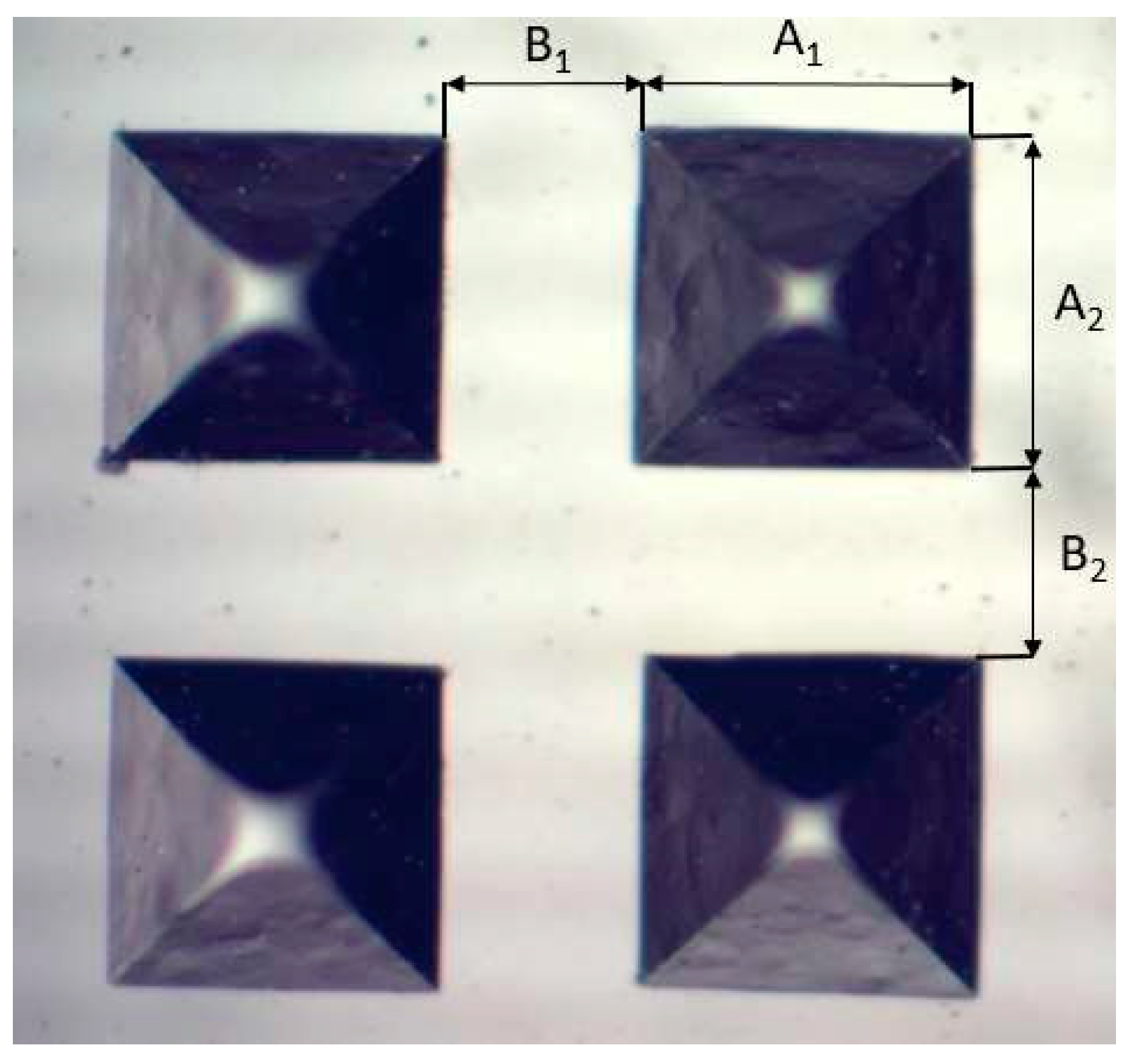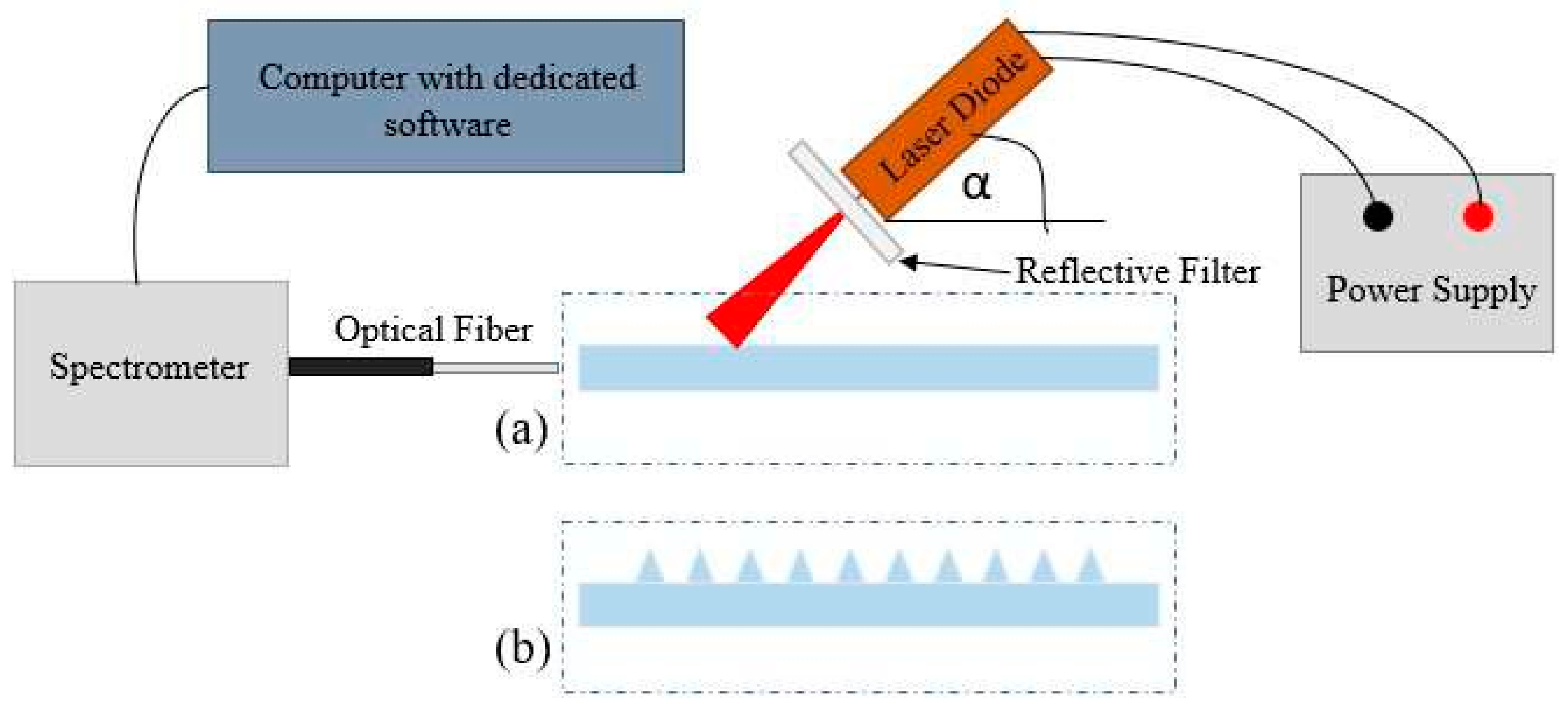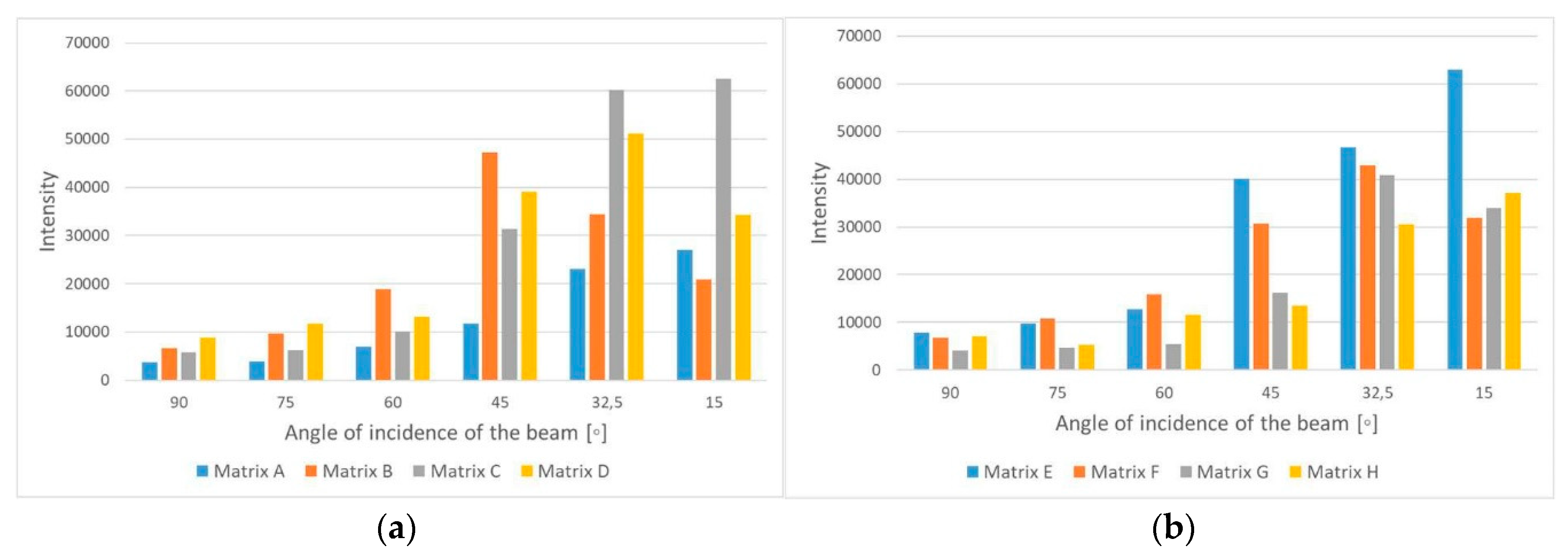Integrated Microprisms Matrix for Coupling a Laser Beam in Microfluidic Systems †
Abstract
:1. Introduction
2. Materials and Methods
3. Results
4. Discussion
Author Contributions
Acknowledgments
Conflicts of Interest
References
- Pires, N.M.; Dong, T.; Hanke, U.; Hoivik, N. Recent Developments in Optical Detection Technologies in Lab-on-a-Chip Devices for Biosensing Applications. Sensors 2014, 14, 15458–15479. [Google Scholar] [CrossRef] [PubMed]
- Cole, R.H.; Gartner, Z.J.; Abate, A.R. Multicolor Fluorescence Detection for Droplet Microfluidics Using Optical Fibers. J. Vis. Exp. 2016, 111, 54010. [Google Scholar] [CrossRef] [PubMed]



| Matrix Configuration | Height [µm] | A1,2 [µm] | B1,2 [µm] |
|---|---|---|---|
| A | 350 ± 15 | 500 ± 10 | 250 ± 10 |
| B | 300 ± 10 | ||
| C | 350 ± 10 | ||
| D | 400 ± 10 | ||
| E | 250 ± 15 | 350 ± 10 | 150 ± 10 |
| F | 200 ± 10 | ||
| G | 250 ± 10 | ||
| H | 300 ± 10 |
Publisher’s Note: MDPI stays neutral with regard to jurisdictional claims in published maps and institutional affiliations. |
© 2018 by the authors. Licensee MDPI, Basel, Switzerland. This article is an open access article distributed under the terms and conditions of the Creative Commons Attribution (CC BY) license (https://creativecommons.org/licenses/by/4.0/).
Share and Cite
Pokrzywnicka, A.; Walczak, R. Integrated Microprisms Matrix for Coupling a Laser Beam in Microfluidic Systems. Proceedings 2018, 2, 1087. https://doi.org/10.3390/proceedings2131087
Pokrzywnicka A, Walczak R. Integrated Microprisms Matrix for Coupling a Laser Beam in Microfluidic Systems. Proceedings. 2018; 2(13):1087. https://doi.org/10.3390/proceedings2131087
Chicago/Turabian StylePokrzywnicka, Aleksandra, and Rafał Walczak. 2018. "Integrated Microprisms Matrix for Coupling a Laser Beam in Microfluidic Systems" Proceedings 2, no. 13: 1087. https://doi.org/10.3390/proceedings2131087
APA StylePokrzywnicka, A., & Walczak, R. (2018). Integrated Microprisms Matrix for Coupling a Laser Beam in Microfluidic Systems. Proceedings, 2(13), 1087. https://doi.org/10.3390/proceedings2131087





